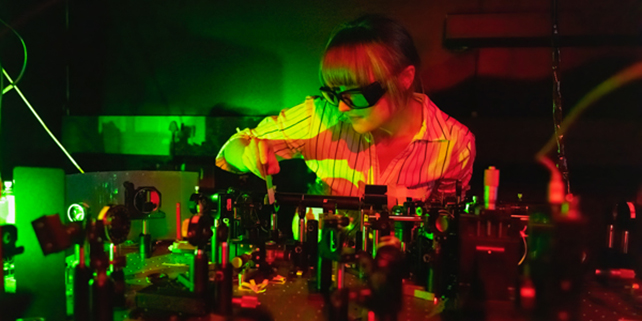Teleportation of quantum states promises to play a central role in securing the information superhighway of tomorrow.
In spite of the headway that's been made, the process remains slow and kind of clunky. That could change, with scientists using a new process that could efficiently teleport states of light to form an image using a single pair of entangled photons
The team, from South Africa, Germany, and Spain, is hopeful that the innovation may help build the secure networks of the future: if the key data isn't transmitted, then it can't be stolen.
"Traditionally, two communicating parties physically send the information from one to the other, even in the quantum realm," says physicist Andrew Forbes, from the University of the Witwatersrand.
"Now, it is possible to teleport information so that it never physically travels across the connection – a Star Trek technology made real."

The research builds on the idea of quantum entanglement, where separated particles remain linked through the wonders of quantum physics. The state of one particle tells us something about the other particle, even if there's a big distance between them.
Two entangled photons were used here, but the researchers were able to pack much more information into them than normal – hence the potential for encoding images. What's more, this extra information was successfully 'teleported' from one point to another.
However, it wasn't teleportation in the standard sense. While the information itself wasn't transferred (like it would be over an internet connection for example), the careful measurement of a specific feature on one of the entangled particles immediately affects the related feature on the other, effectively transmitting its quantum state.
By then transferring actual details of the original measured particle the old-fashioned non-teleporting way, it's possible to lock that state in place, while the original state is destroyed.
While it might not be a faster way to send information, it does create a handy quantum watermark for any information you don't want anybody else to see.
In this latest experiment, the researchers showed how an innovative new detection method could provide the necessary measurements on a photon's angular momentum, boosting the number of dimensions that could be teleported in a quantum state.
"This protocol has all the hallmarks of teleportation except for one essential ingredient: it requires a bright laser beam to make the nonlinear detector efficient, so that the sender could know what is to be sent, but doesn't need to know," says Forbes.
"In this sense, it is not strictly teleportation, but could be in the future if the nonlinear detector could be made more efficient."

The "nonlinear detector" mentioned here is another crucial part of the setup, both in handling the extra capacity of the entangled photons, and in making sure the information is accurately conveyed from one point to another.
One way this could be used in the future, suggest the researchers, is to send your fingerprint to a bank. By teleporting spatial details of your fingerprint in the form of a quantum state, future security measures could create a key that effectively locks a box of digital information, one personalized to your body.
While the physics at play here are quite complex, now that the proof-of-concept experiment has been carried out in the lab, we can look forward to further advances in the field of quantum teleportation.
"We hope that this experiment showing the feasibility of the process motivates further advances in the nonlinear optics community through pushing the limits towards a full quantum implementation," says physicist Adam Vallés, from Institute of Photonic Sciences (ICFO) in Spain.
The research has been published in Nature Communications.
